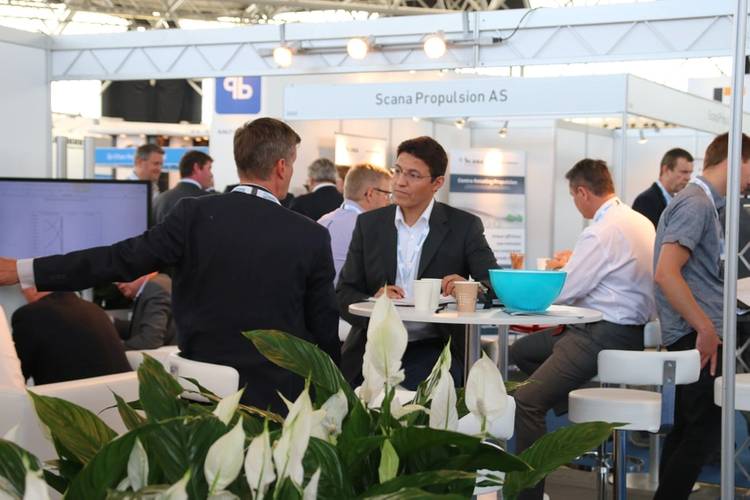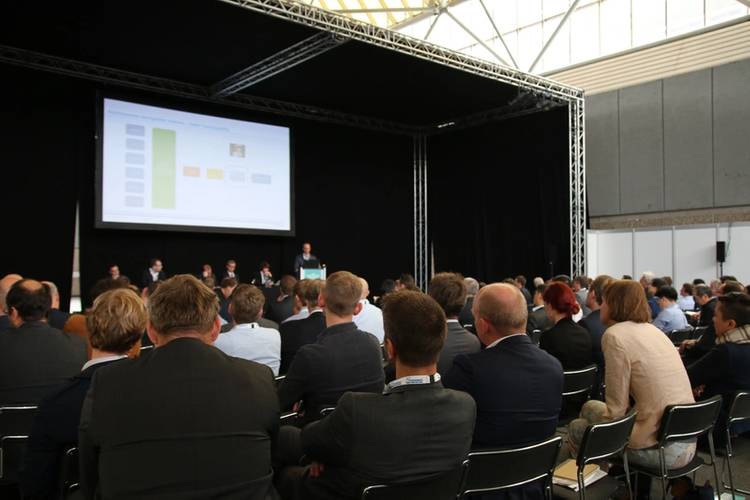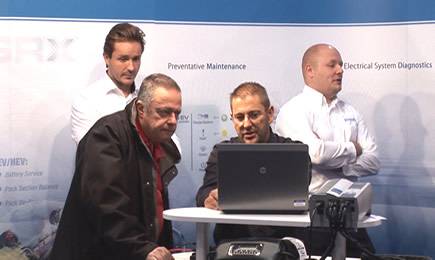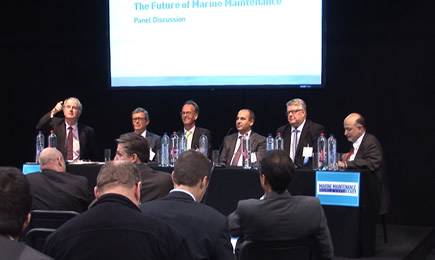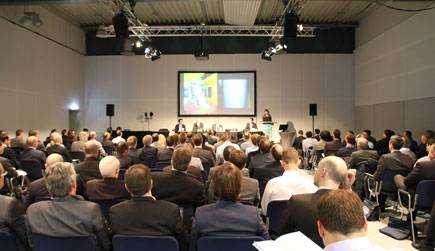Amsterdam hosted four different maritime conferences during week June 21-23, with two common exhibitions – all in the same RAI Conference & Exhibition Complex. The Autonomous Ship Technology Symposium, Electric & Hybrid Marine World Expo and Marine Maintenance World Expo and Conference were organized by UKIP Media & Events while the fourth, defense related, MAST (Maritime/Air Systems & Technologies) Conference and Exhibition was organized by MAST Communications.
For an inaugural event, the three-day Autonomous Ship Technology Symposium 2016 was very well attended by a wide cross section of interested parties from the marine industry covering manufacturers, researchers, classification societies, academics, legal/law individuals, naval and harbor/pilotage authorities ensuring stimulating questions at the end of each session in addition to the panel discussions covering each day’s proceedings at the close of each day. Although the predominance of the 39 papers presented by variety of international organizations were from Europe, there were several presentations given by speakers from Asia and North America. The resounding success of this event looks as if it is establishing itself as an annual occurrence: next year the dates are June 6-8, also in Amsterdam.
The keynote presentation session was opened by an address made by Oskar Levander of Rolls-Royce, a company that has heavily invested in unmanned technology and is already are proposing ship designs of fully unmanned vessels. Looking to the developments in modern society toward unmanned machines, trains, aircraft and automobiles as he rightly said, looking to ships, it is not if, but when. Manning is the third largest general cargo annual cost behind fuel and CAPEX, which alone gives a strong incentive to reducing manning levels. As a practical example, for a 20,000 dwt general cargo vessel cruising at 12 kts, a 22 percent cost saving by going unmanned may be possible.
Adding safety considerations with fewer collisions, groundings and other accidents due to human error unmanned ships become increasingly attractive.
Of course it is not all that simple, and the other side of the coin are matters such as cyber security, communications and reliability thereof, rules and regulations that have to be updated and in some cases rewritten and there are liability considerations to be addressed.
Levander closed his presentation with a Roadmap proposal that by 2020 there shall be ships already with reduced crews thanks to remote support and operation of certain functions. The appearance of local vessels being remotely operated. Already by 2025 remotely controlled unmanned coastal vessels will be on the increase and five years later remotely controlled unmanned ocean going ships will be transporting cargoes. Fully autonomous unmanned ocean going ships will be operational by 2035.
Further keynote presentations were made on the subjects of autonomous navigation and autonomous technologies in naval operations, the autonomous waterborne applications initiative project, and five steps to autonomous ship operation.
A rather important item of conjecture and vagueness concerning autonomy of ships is the definition of the term “autonomous”. Is it remote control, or automatic with a man-in-the-loop if something goes wrong or is it a fully self-contained automatic autonomous system that knows itself what to do using AI (artificial intelligence)?
The idea of remote piloting vessels of all sizes has been around for many years and with increasing automation of bridge duties, unmanned engine rooms and general manning levels have dropped so significantly that the unmanned ship era is fast approaching. The concept of “tele-presence” has been with us for many years in the form of drones in the air are predominately military with access to very powerful satcom systems not yet available to commercial operators.
A key element enabling remote operation of vessels is the available bandwidth of satcom systems. The numerous monitoring requirements of propulsion, weather, navigation, radar and optical sensors require a large amount of data to be transmitted to the command and control center. And the returning command decisions/controls has to be returned on board.
As with many technologies legislation is fast being overtaken and is already trailing in some respects. Fortunately the organizations including IMO and classification societies are watching these developments and drawing up discussion documents and in some cases guidelines on this subject.
Perhaps the greatest area of concern regarding this subject is what happens when things go wrong, e.g. loss of communications, does the ship have sufficient artificial intelligence to be able to work out what to do – and avoid bumping into things. Fortunately this is also a subject of research and development by a number of companies offering insight into their solutions to this dilemma.
Producing a robotic navigation system that obeys COLREGS is one thing, but as we know from practice it is when the rules are not being followed for whatever reason that accidents happen. Therefore an unmanned vessel has to have sufficient AI (artificial intelligence) to work out a safe solution to a potentially dangerous situation. It is all very well after the incident occurs to point out that the “third party” was to blame, yet we know that responsibilities dictate that at all times good seamanship shall prevail.
Knowing what to do in a predictable manner if a certain situation arises is one thing but what happens when the other vessel fails to react as it should – how will the autonomous vessel behave when the other party is misbehaving? Collision avoidance is a very important part of the autonomy conundrum although a few companies do appear to offer solutions with a presentation by 5G International/Robosys demonstrating their Obstacle Avoidance System that provides a fully automatic autonomous collision avoidance capability.
The companies that deliver a compatible navigation systems able to take all these factors into account will reap the rewards of the future unmanned systems market.
The Electric & Hybrid Marine World Expo, returning to Amsterdam for the third successive year, presented more than 40 papers including from two industry giants from the world of marine propulsion Kawasaki Heavy Industries and MAN Diesel & Turbo. Early next year in North America, there will be an Electric & Hybrid Marine World Expo 2017 in Tampa, Fla. January 16-18, 2017. The Electric & Hybrid Marine World Expo 2017 conference returns to Amsterdam on June 6-8, 2017.
The 2016 Marine Maintenance World Expo and Conference was held in adjacent halls and shared a common exhibition area with the two other conferences. A total of 38 papers were presented by a wide variety of international speaker over the three day conference and there were lively discussions at the close of each session.










